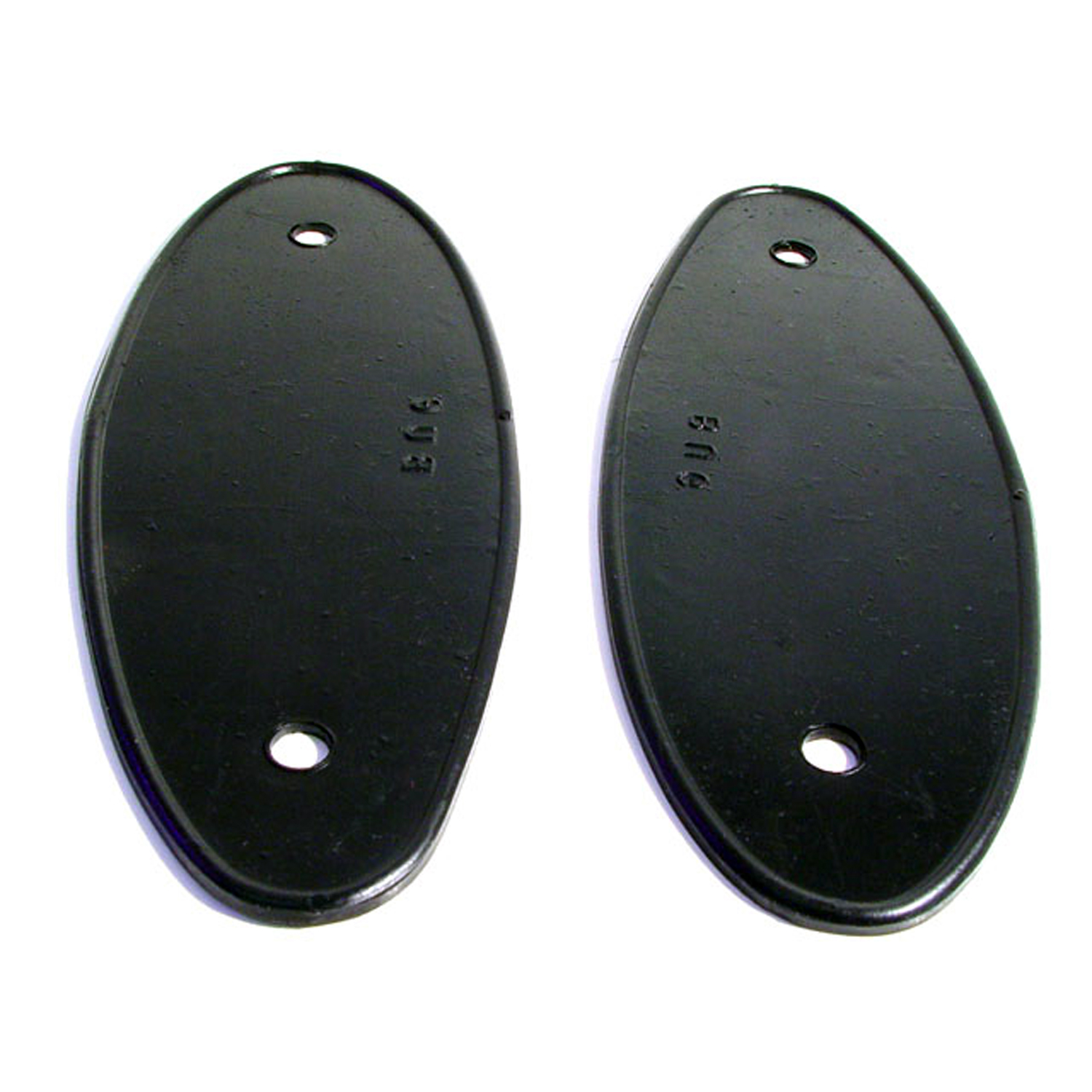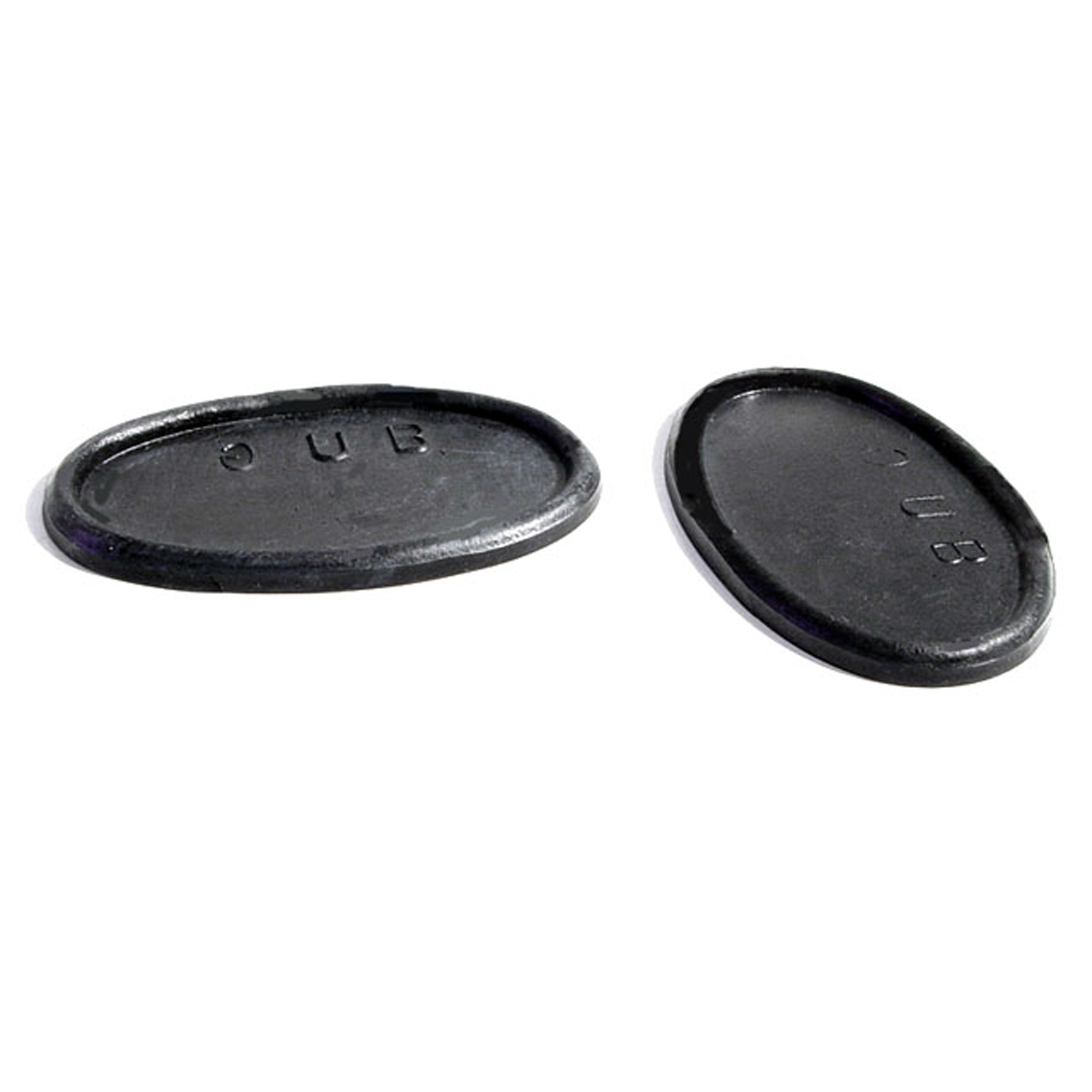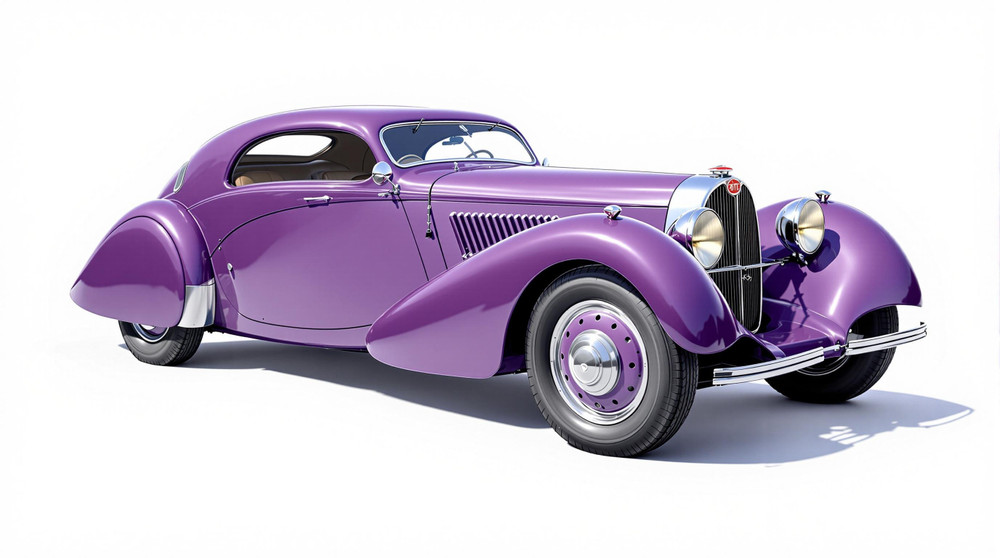Image of 1935 Bugatti Type 50, Note: These illustrations use artistic license and may differ from actual historical models.
Performance Metrics
Fundamental Metrics
Emotional Appeal
MMP Rating
| Engine Specifications | |
|---|---|
| Engine: | Straight 8 |
| Displacement: | 4.9 L |
| Horsepower: | 200-250 HP |
| Torque: | Not available |
| Compression Ratio: | Not available |
| Ignition System: | Coil ignition |
| Cooling System: | Water |
| Performance Specifications | |
| 0-60 Time: | Not available |
| 1/4 Mile Time: | Not available |
| Top Speed: | 100 mph |
| Transmission and Drive | |
| Drive Type: | Rear-wheel drive |
| Transmission Type: | 4-speed manual |
| Fuel and Efficiency | |
| Fuel System Type: | Carburetor |
| MPG: | Not available |
| Dimensions and Brakes | |
| Brakes: | Mechanical drum brakes |
| Wheelbase: | 130 inches |
| Weight: | 2,200 lbs |
Note: Specifications for classic cars are given to the best of our ability, considering the limited and variant data available.
Unveiling the Grandeur of the 1935 Bugatti Type 50
The 1935 Bugatti Type 50 stands as a testament to the pinnacle of pre-war automotive engineering and luxury. Born from the genius of Ettore Bugatti and his son Jean, this magnificent machine was crafted in Molsheim, France, during an era when cars were transitioning from mere transportation to symbols of status and technological marvels. The Type 50 was not just a car; it was a masterpiece that encapsulated the grandeur of its time, with only a handful ever produced, making it a rare jewel in the crown of automotive history.
Design and Innovation
With its long, flowing lines and an imposing front grille crowned by the iconic Bugatti emblem, the Type 50's exterior styling was nothing short of breathtaking. Its low-slung body and pronounced fenders exuded a sense of speed and elegance that was unrivaled. Inside, occupants were swathed in luxury with sumptuous leather upholstery and exquisitely detailed wood accents. The quality of materials reflected Bugatti's commitment to excellence and bespoke craftsmanship.
Technologically, the Type 50 boasted an impressive twin-cam engine derived from its racing counterpart, the Type 51. This innovation allowed for remarkable performance figures at the time. Color options were typically custom-tailored to the buyer's preference, with rich blues and deep reds being popular choices. The most iconic body style was undoubtedly the Touring Coupe, with its distinctive two-tone paintwork and elegant profile.
Historical Significance
The Type 50's impact on automotive design was profound. It introduced a level of performance and luxury that set a new benchmark for grand tourers. Its engine design influenced future generations of sports cars and remains a hallmark in Bugatti's storied lineage. The vehicle's exclusivity and craftsmanship have cemented its legacy as one of the most desirable collector's items from the era.
Performance and Handling
The heart of the Type 50 lay in its powerful engine, capable of propelling it to speeds upwards of 100 mph—a remarkable feat for its time. Acceleration was brisk, with a surge of power that could take it from 0-60 mph in seconds that would rival many post-war sports cars. Handling characteristics were advanced for its era, though drivers had to be mindful of its solid axle suspension when navigating rougher roads or sharp bends.
The driving experience was visceral; the roar of the engine provided an acoustic delight while the car responded eagerly to every input. It was an automobile that demanded engagement and rewarded drivers with an exhilarating ride.
Ownership Experience
Originally intended for the affluent, the Type 50 often found itself as a showpiece or participating in gentlemanly racing events. Maintenance required skilled hands, as each vehicle was essentially hand-built with bespoke parts. Reliability was typical for high-end vehicles of the period—robust when well-maintained but requiring regular attention.
Fun Facts
The Type 50 is shrouded in fascinating trivia; for instance, fewer than 65 units were ever produced, adding to its exclusivity. While not known for breaking speed records, it held its own as one of the fastest road cars available at the time. It also graced various high-profile events throughout Europe, mingling with society's elite.
Collector's Information
In today's market, a well-preserved Bugatti Type 50 can fetch astronomical sums, often ranging into millions of dollars due to its rarity and historical significance. As these vehicles seldom come up for auction, each appearance creates a stir among collectors worldwide.
Conclusion
The 1935 Bugatti Type 50 is more than just a classic car; it is an artifact representing the zenith of pre-war automotive artistry. Its blend of performance, luxury, and rarity continues to captivate enthusiasts and collectors alike—a true masterpiece on wheels that transcends time.
1935 Bugatti Type 50 Catalog of Parts
 1935 Bugatti Type 50 Headlight Pads. 3" wide X 8-1/8" long. Pair-MP 337-AHeadlight Pads. 3" wide X 8-1/8" long. Pair
1935 Bugatti Type 50 Headlight Pads. 3" wide X 8-1/8" long. Pair-MP 337-AHeadlight Pads. 3" wide X 8-1/8" long. Pair 1935 Bugatti Type 50 Door Handle Pads. 1-3/8" wide X 2-1/4" long. Pair-MP 337-BDoor Handle Pads. 1-3/8" wide X 2-1/4" long. Pair
1935 Bugatti Type 50 Door Handle Pads. 1-3/8" wide X 2-1/4" long. Pair-MP 337-BDoor Handle Pads. 1-3/8" wide X 2-1/4" long. PairWhy Choose Metro?
For over 100 years, Metro Moulded Parts has been the pinnacle of quality in classic car restoration parts. Our commitment to precision and authenticity in every component ensures a perfect fit and an OEM-level appearance.
- Expert Craftsmanship & Quality: Each part is a testament to our dedication to reliability and perfection, crafted from original designs and thoroughly tested.
- Advanced Technology: We use cutting-edge techniques to create flawless, long-lasting parts that surpass others in performance.
- SuperSoft Sponge – The Ultimate Door Seal: Not only are our door seals 30% softer than competitors', but they're also guaranteed to never leak. They effectively reduce wind and road noise, enhancing your classic car's comfort and driving experience.
- Proudly American: Our parts are a product of American craftsmanship, made in the USA with a spirit of excellence and heritage.
- Unrivaled Warranty: We back our products with a 30-year industry-leading warranty, a testament to our confidence in their quality.
Join us in preserving the legacy of classic cars with parts that are crafted for perfection, not just made.

